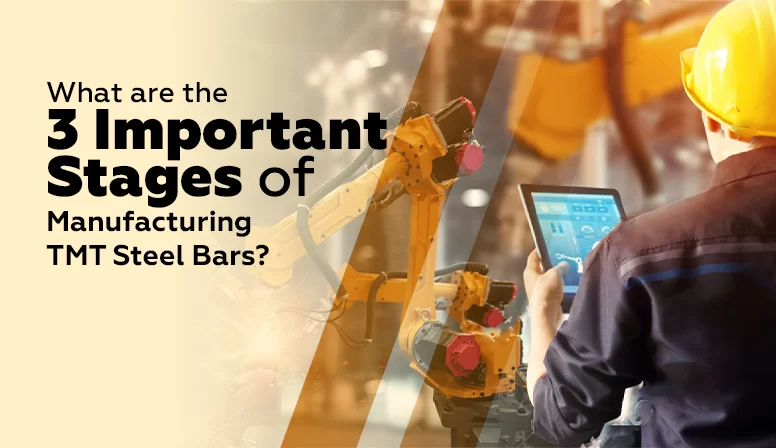You’ll require an integrated steel plant with superior raw materials, an automated rolling mill stand, and well-designed quenching and tempering equipment for Manufacturing TMT Steel Bars. A strict quality control process and after-sales support are necessary to offer the best user experience to the customers.
TMT bars are a necessary component in the construction of real estate. TMT bars are supremely pliable and malleable; they’re considered one of the most vital components of any structure.
We primarily used TMT Rebars in construction. They have a soft inner core microstructure and a hard outer surface. The Thermo means for the heat treatment process carried out, and Mechanical treatment is the rolling process for producing Round TMT rebars. They come in many cross-sections, from small diameters of 8mm to around 32mm. According to the required diameter of the rebar, the number of passes in rolling depends.
Steel can be used as a reinforcement with concrete because steel and concrete bind well. Steel has muscular tensile strength, which compensates for the concrete, and their coefficients of thermal expansion are nearly identical.
Fe 500 or Fe 500 D shows the grade of the TMT bar. Fe means Iron 500 is the Yield strength of the TMT rebars, finally coming to the D, it means better elasticity (a higher UTS/YS ratio, a better elongation).
The Properties of TMT Reinforcement Steel
- Higher-strength with better elongation.
- Excellent Weldability.
- Resistance to fire hazards.
- Excellent Ductility.
- Higher Fatigue Strength.
- Easy workability at the site.
- Better Bonding Strength.
- Better Corrosion Resistance.
The Three Essential Stages Of Manufacturing TMT Steel Bars Are As Follows.
Quenching
The primary and initial step in the production process is quenching. Once manufacturers remove hot-rolled bars from the finished manufacturing, they enter the Thermax system, a water splashing system. Thermax technology is used in the best quality TMT bars fabrication process to swiftly cool the external center and ensure the malleability of TMT rebars. Fast cooling hardens the TMT rebars’ shallow center to a greater depth in each area, forming a martensitic edge, and the core remains hot and austenitic. The quenching process of TMT Bars is the name for this cooling invention.
Self-Tempering
Self-tempering is the second stage of the TMT production process. The excess heat is transferred from the core to the outer layer, hardening the martensite layer and making the bar more challenging. They gave this stage its name since the heat left in the core completes the procedure. When the rebars leave the Thermax quenching box, the core remains hot compared to the surface. It allows heat to escape from the center to the surface.
Annealing
The final step in the TMT rebar manufacturing process is the annealing stage. The bars are now at a uniform temperature and left to cool naturally despite all air to encompassing temperature throughout this annealing period. The remnant austenite is transformed into a refined, extreme, ductile ferrite and pearlite core, determining the bars’ ductility.
Every one of these processes is completed without the use of expensive alloying components, making TMT steel cost-effective to provide. TMT bars are the most popular support bars when combined with the correct strength-to-ductility ratio. While selecting fortified bars, please make a point of leaning toward the proper classes, as TMT steel bars are classified based on their tensile strength. The steel bars pass through a meticulously designed water-cooling system. They cool naturally until the external surface of the bars cools while the core remains hot. The temperature in the bars rises because of this. The bar comes in contact with air after the escalating cooling, and the core re-heats the quenched surface layer by conduction, tempering the outer martensite. When the manufacturer finally removes bars from the cooling framework, heat flows from the core to the outside surface, tempering the bars and encouraging them to attain a higher quality return. The heat-treated structure that follows is of higher quality and strength than the bars.
You now understand Manufacturing TMT Steel Bars, the most critical component of your construction structure. These are the steps involved in Producing High-Quality TMT Bars. TMT bars of the highest quality can fulfill international requirements and assure the safety of your projects.


Leave a Reply